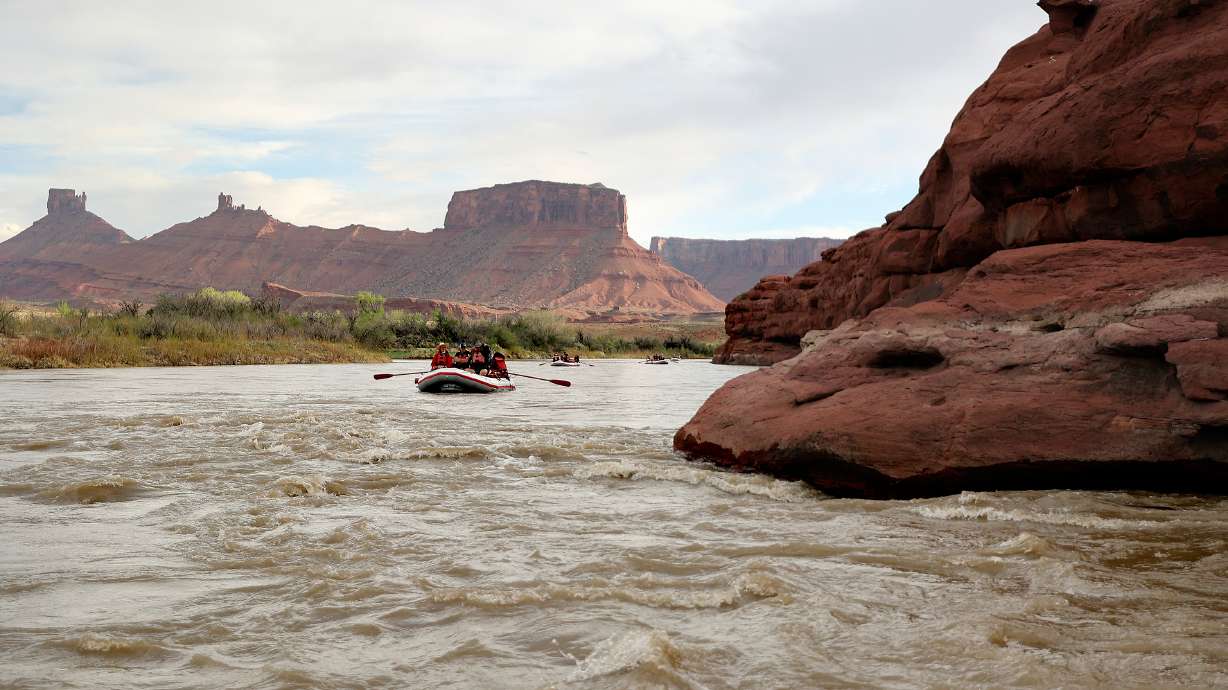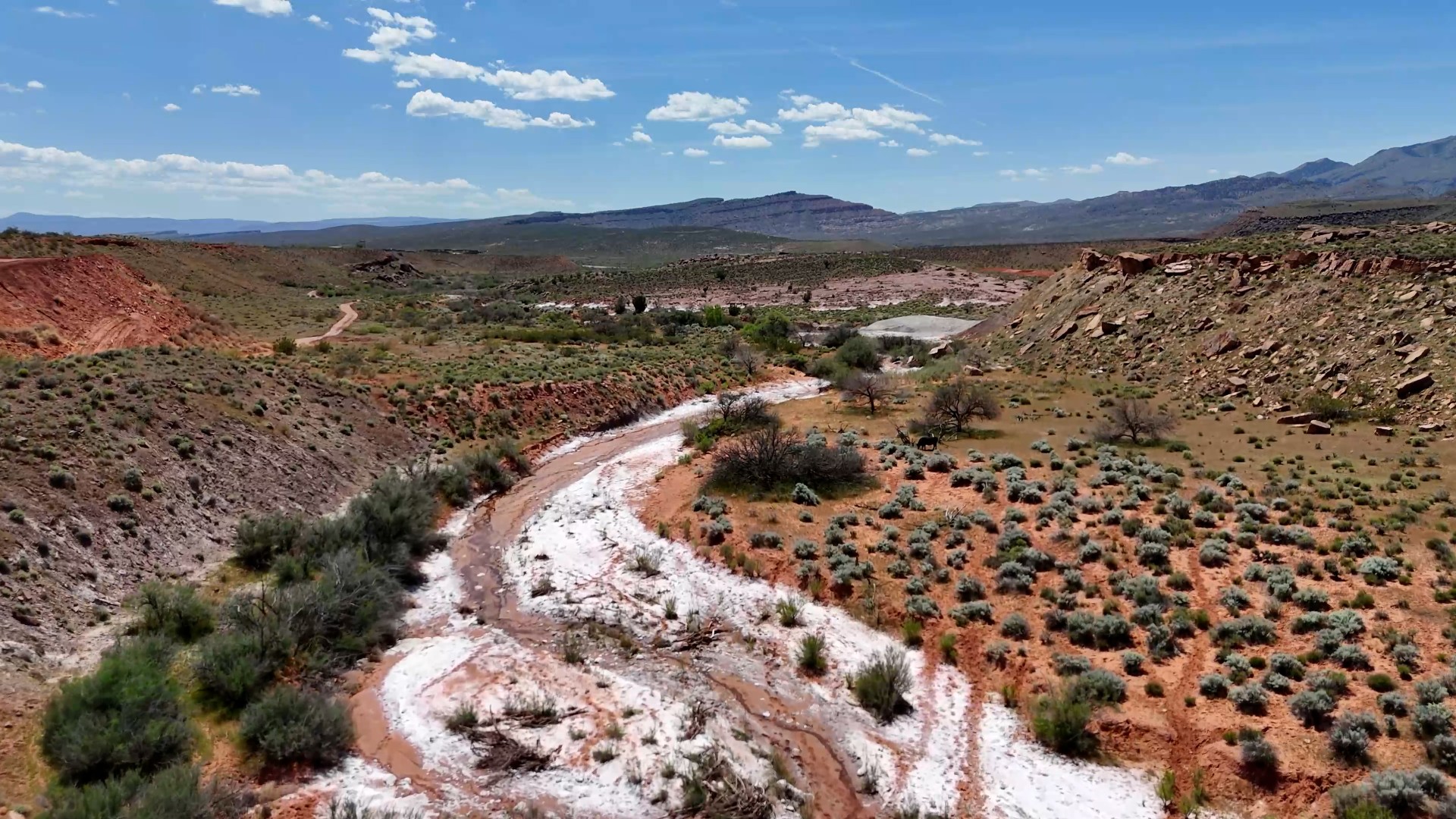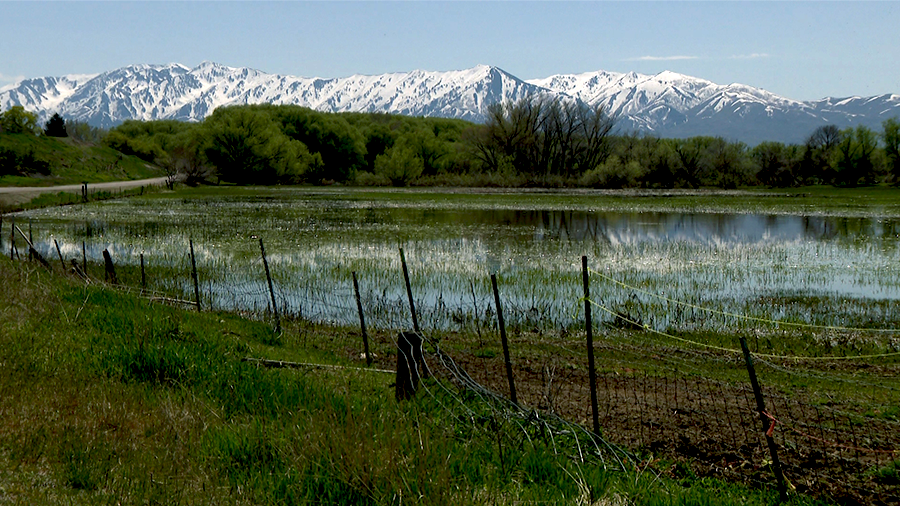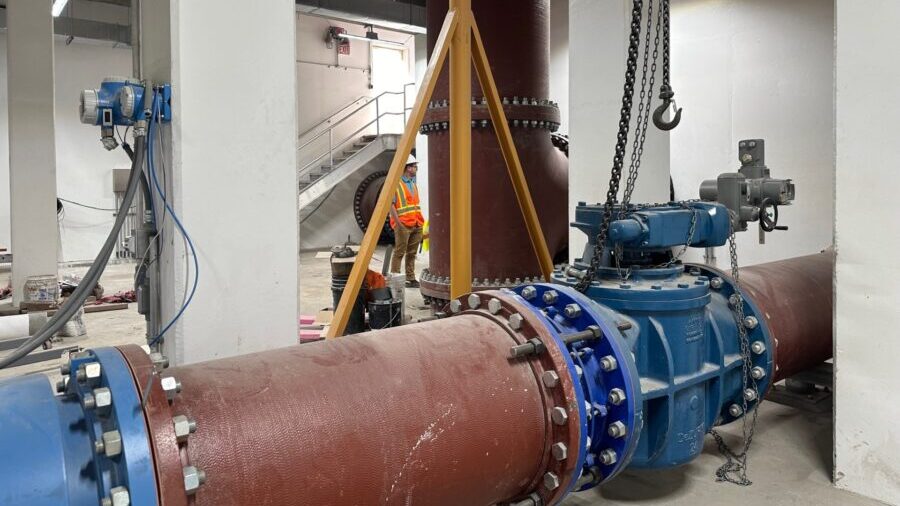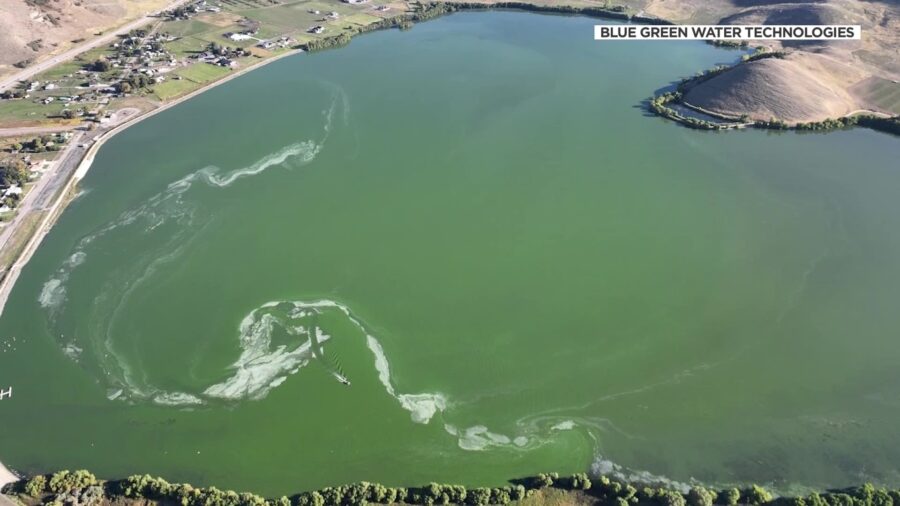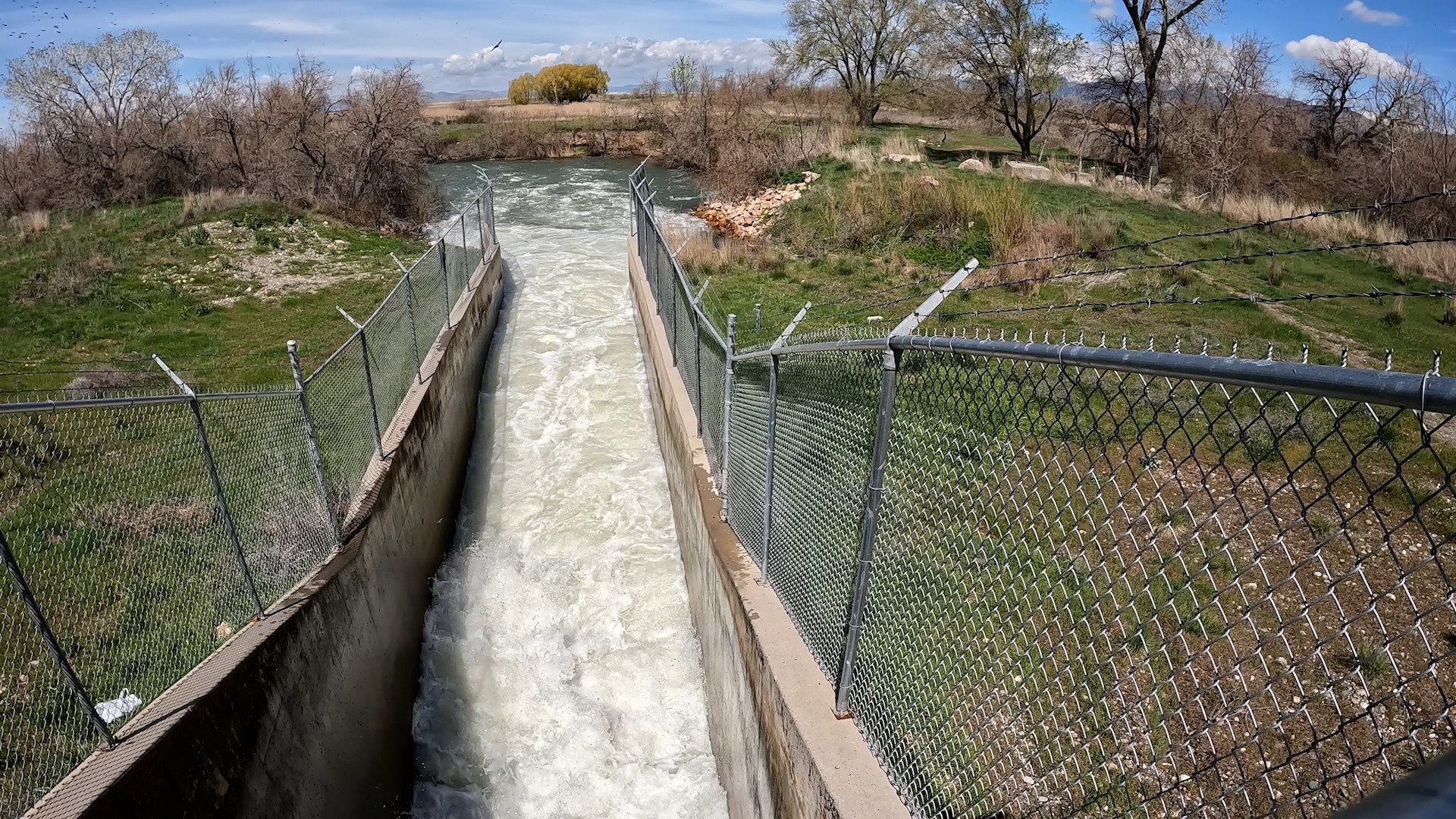Utah’s reservoir capacity soars past 80%. Here’s which ones are now full
Jun 16, 2023, 9:54 AM | Updated: 6:57 pm
SALT LAKE CITY — What a difference a year makes.
Utah’s reservoir system is in a much better place with summer around the corner than last year, as what’s left of the state’s record-breaking snowpack continues to melt in what water managers are calling a “near-perfect runoff.”
“Mother Nature has absolutely given us two incredible lifelines,” said Gene Shawcroft, general manager of the Central Utah Water Conservancy District, referencing the record snowpack and efficient spring runoff. “There were a number of things done to manage the water in a way that we were able to fill the reservoirs and provide some water to the Great Salt Lake.”
The Utah Division of Water Resources reported Thursday that Utah’s reservoir system, excluding Lake Powell and Flaming Gorge, is now up to almost 84% capacity.
It adds that 18 of the state’s largest 45 reservoirs are at 100% capacity or higher at the midway point of June, while another 20 reservoirs are between 80% and 99.9% of full capacity. By comparison, the reservoir system was nearly 60% full on June 15 last year, and only about a dozen reservoirs were listed at 80% capacity or higher, according to the agency.
Aside from Lake Powell, which is now up to 36% capacity, only two of the 45 largest reservoirs in Utah are below 40%. Those are because of dam safety projects; for instance, Yuba Reservoir is only listed at 31% of capacity and is not expected to be refilled this year, agency officials said.
Shawcroft credits the weeks of warm, but not hot and cloudy weather for helping the record snowpack come down from the mountain without the widespread flooding that he and others feared could happen this spring with such a high snowpack. Not only did it spare flooding, but the more efficient runoff also helped some of the state’s largest reservoirs to regain more water than managers had hoped.
For example, Strawberry Reservoir in Wasatch County is up to 88% capacity and is expected to surpass at least 90% this year.
“There was not the expectation that we would come even close to that. That’s a great thing,” Shawcroft said. “Strawberry Reservoir is the long-term water supply for the Wasatch Front, and so having Strawberry full is very important to us.”
Utah’s reservoir situation before the summer
Reservoirs at 100% capacity or higher
- Stateline: 14,139 acre-feet (117.8% full)
- Ken’s Lake: 2,610 acre-feet (113.5% full)
- Minersville: 27,077 acre-feet (109.6% full)
- Woodruff Narrows: 62,185 acre-feet (108.5% full)
- Steinaker: 36,148 acre-feet (108.2% full)
- Panguitch Lake: 24,000 acre-feet (107.6% full)
- Moon Lake: 38,099 acre-feet (106.4% full)
- Gunlock: 11,554 acre-feet (106% full)
- Smith and Morehouse: 8,382 acre-feet (103.5% full)
- Scofield: 67,589 acre-feet (102.7% full)
- Joes Valley: 62,740 acre-feet (101.9% full)
- Rockport: 61,893 acre-feet (101.6% full)
- Millsite: 18,273 acre-feet (101.2% full)
- East Canyon: 50,003 acre-feet (101% full)
- Woodruff Creek: 4,040 acre-feet (101% full)
- Big Sand Wash: 25,987 acre-feet (100.5% full)
- Cleveland Lake: 5,372 acre-feet (100.4% full)
- Causey: 7,100 acre-feet (100% full)
Reservoirs at 80% to 99% capacity
- Lost Creek: 22,457 acre-feet (99.8% full)
- Otter Creek: 52,534 (99.6% full)
- Miller Flat: 5,400 acre-feet (99.2% full)
- Pineview: 109,193 acre-feet (99.2% full)
- Piute: 66,020 acre-feet (98.9% full)
- Deer Creek: 147,830 acre-feet (98.7% full)
- Starvation: 161,984 acre-feet (98.7% full)
- Jordanelle: 309,257 acre-feet (98.5% full)
- Echo: 72,580 acre-feet (98.2% full)
- Newton: 5,270 acre-feet (98.1% full)
- Red Fleet: 24,899 acre-feet (96.9% full)
- Currant Creek: 14,872 acre-feet (96% full)
- Willard Bay: 206,046 acre-feet (95.8% full)
- Hyrum: 14,589 acre-feet (95.4% full)
- Sand Hollow: 46,920 acre-feet (92% full)
- Utah Lake: 798,272 acre-feet (91.7% full)
- Porcupine: 11,922 acre-feet (91.7% full)
- Strawberry: 973,925 acre-feet (88.1% full)
- Upper Enterprise: 8,705 acre-feet (87% full)
- Lower Enterprise: 2,188 acre-feet (84.2% full)
Source: Utah Division of Water Resources. Collected at 3 p.m. on Thursday.
How much more will reservoirs grow?
There was still 0.7 inches left in the statewide snowpack as of Thursday afternoon, according to Natural Resources Conservation Service data. Most of what’s left is in the Wasatch Mountains and high-elevation areas of the south-central mountains. While what’s left only represents a little over 2% of this year’s record 30-inch peak in April, the snowpack is normally melted statewide by June 14, based on the 30-year median.
Candice Hasenyager, director of the Utah Division of Water Resources, wrote in an email statement to KSL.com Thursday that it’s still unclear what the final statewide reservoir capacity will be this year until all that remaining snow has melted.
Shawcroft, who also serves as chairman of the Colorado River Authority of Utah, explained that water managers typically wait until the end of the runoff to top off the reservoirs so they are able to manage flood risks. He adds that what’s left in the mountains is “completely manageable,” and not much of a major flood risk anymore.
It’s worth noting that even the reservoirs that Utah typically doesn’t rely on are benefiting this year. Lake Powell has already gained more than 50 feet since its record low earlier this year and remains on track to gain another 15 feet in the coming weeks, Shawcroft said.
Meanwhile, both he and Hasenyager agree that Utahns shouldn’t return to pre-draught water habits even as many reservoirs refill. They note that there’s no guarantee that the 2023 water year is nothing but a “blip” within the megadrought that began more than two decades ago.
“Reservoirs store water during wet years for use during dry years. It was this stored water that helped us get through the past couple of drought years,” Hasenyager wrote. “Snowfall is unpredictable, so it’s critical we always use our water supply efficiently.”
Contributing: Ladd Egan


